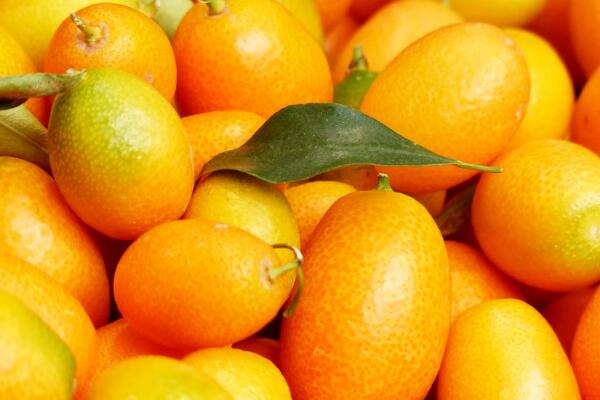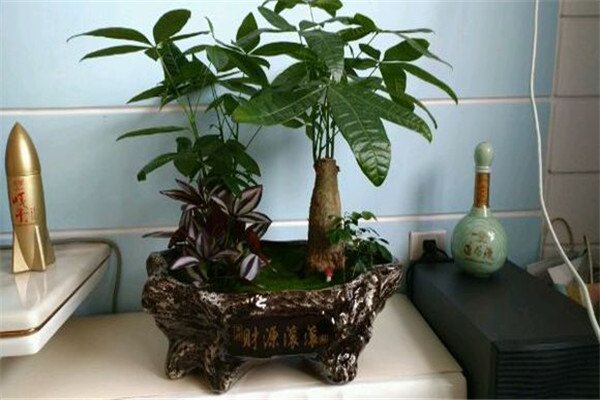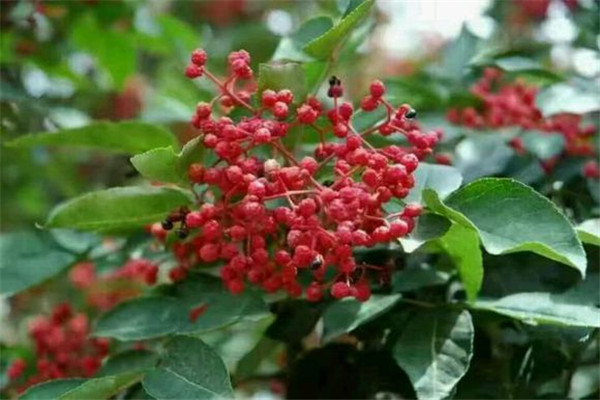What should be paid attention to when planting kumquat seeds? What are the pollution-free cultivation techniques?
Kumquat is a plant of kumquat of Rutaceae, also known as golden jujube, kumquat and small orange. Originally distributed in the coastal provinces of southeastern China, especially in Guangdong, the cultivation and consumption of kumquat has the longest history, and it is a veritable hometown of kumquat. In addition, South China and the middle and lower reaches of the Yangtze River are also widely cultivated. So what should be paid attention to in its seed planting? What are the cultivation techniques? Let's learn about it together.

What should we pay attention to when planting kumquat seeds?
Seed selection and seed treatment
The main results are as follows: 1. First of all, select the excellent single fruit, process the extruded seeds, wash the mucus in clean water in time, remove the unplump seeds, leave the plump seeds, and sow them in the shade and dry. If they are not sown at that time, they can be stored with 3 to 4 portions of fine sand. Layer-by-layer accumulation, stored in a certain temperature and dry, ventilated place, but also to prevent excessive dryness or too wet to make the seeds lose their germination power.
2. Selection of nursery site
Choose leeward overcast valleys or hilly slopes as nursery land. The sandy soil with deep fertile soil, loose soil and good aggregate structure is required. Where the soil layer is shallow and thin, the texture and grain weight are not suitable for nursery land. Also pay attention to convenient transportation in order to transport seedlings.
The arrangement of the nursery land must be ploughed once in winter before sowing, and ploughed again in the early spring of the following year, with a depth of more than a foot, the soil surface should be raked flat and broken, and the high or low beds should be opened according to the water level.
3. Sowing seeds at the right time
Spring sowing in February and March is the most suitable, and winter sowing is also available in November. The sowing rate is 10 to 15 kilograms per mu. Sowing method, sowing in trenches on the border surface. Put 15 to 20 piculs of human and animal dung water per mu, 30 to 40 piculs of barnyard manure, and 15 to 25 kilograms of superphosphate or calcium magnesium phosphate fertilizer as base fertilizer. The row spacing is 3 inches and the grain spacing is 1.5 to 2 inches. Then cover it with three-tenths of thick plant ash or fine sand. The side of the box is covered with a layer of straw or weeds for water conservation and drought prevention. When the seeds emerge from 2 to 4 true leaves, they should be pseudo-planted with a row spacing of 5 × 3 inches. If you do not engage in fake planting, it is necessary to relax the line spacing.
Second, what are the pollution-free cultivation techniques of kumquat?
1. Seedling management: the seedlings must be watered frequently before they are unearthed to keep the soil moist. Topsoil consolidation should be loosened with bamboo sticks to facilitate seed germination and unearth. when the seedlings reach two true leaves, sprinkle with 5 piculs of rotten dung water and 8 to 5 piculs of water per mu. Apply dilute dung water to the roots every half month. Be careful not to let the feces stick to the leaves. Loosen the soil and weed before fertilizing, and water should be drenched in dry weather. To keep the soil loose and free from weeds, we should pay attention to the harm of livestock and diseases and pests. When the seedlings grow up to 1.5 feet, pick the core buds once to promote multiple branches, and all the branches more than 8 inches in the trunk should be cut off in order to cultivate a good tree type.
2. Transplantation: it is better to transplant in the south wind weather in spring. Choose seedlings with thick stem, strong growth, straight, well-developed root system, no diseases and insect pests, 1.5 feet in height and thick green leaves. On the contrary, they should be eliminated. Two days before the seedling, water should be drenched once to make the soil moist. Do not dig up the main root, and cut off 1/3 of the main root. The planting size is 5 × 7 feet. First dig the pit 1 foot deep, first put the topsoil bacon, and then put the new soil to compact to keep the seedlings upright. If the soil is dry, it should be drenched with root water.
3. Orchard management: those with dead seedlings should be made up in time after planting. In the first one or two years, short stalk crops such as fragrant valley, green manure, mung bean and taro should be planted between rows. Do not interplant tall crops such as Muru, so as not to affect the growth of orange seedlings. After stopping interplanting, dig deep in January and February every two years, five or six inches deep. Shovel grass once a year when you are ambushed. Shovel weeds should not accumulate in the trees, so as not to collect insects. The orange tree is upright and the growth potential is very strong. It is necessary to do a good job of pruning and cutting the top, control the upright growth too high, let it have too many branches, and form a luxuriant crown, so as to create conditions for increasing fruit yield and convenient fruit harvest in the future.
4. Selective grafting
Kumquat grafted seedlings have the characteristics of fast fruiting, short branches, no thorns or less thorns, high yield and high quality. When grafting, the excellent single plant scion should be grafted with shell stock or kumquat stock.
5. Weeding and fertilization
For the care of Golden Orange Forest, weeding has always been done once a year. With the progress of society, the progress of science and technology. The practice is to first remove weeds and reclaim land, and then apply 55 kg of urea, 86 kg of calcium magnesium phosphate fertilizer, 25 kg of potassium chloride, 173 kg of tung bran and 49 kg of lime per mu for 4 consecutive years. The average fruit yield per mu is 524 kg in the first year, 303 kg higher than that without fertilization, an increase of 137.7%, and 628 kg in the second year, an increase of 518.2%. In the third year, it increased to 579kg, an increase of 227.8%; in the fourth year, it increased to 1279 kg, an increase of 352.5%.
6. Renewal of old trees
Thirty or forty years later, the orange trees were already old, with extremely low output and poor quality. some of them were eaten by longicorn beetles, the trunk was hollow, and the transport tissue was destroyed, resulting in withered, yellow and dead branches, so the old trees should be renewed. In March, April and May, respectively, the trunk of the old orange tree was sawed off at a height of 4 inches on the flat ground, and the compound fertilizer was applied to 5 public halls. It began to sprout 38 days after sawing. By September 30, about 4 months, the average bud height was 96.3 cm.
Attached: the method of potted kumquat
Generally planted orange seeds germinate in pots for about 3 weeks, and the temperature is slightly warmer. When planted in colder weather, the germination time will be later.
The first step is to get orange seeds. Orange seeds are obtained from fresh oranges bought in the market, and just stay when eating oranges.
Step two, keep it clean. The collected orange seeds need to be kept clean to remove the pulp from the surface.
The third step is to soak the collected orange seeds in clean water and change the water once a day so that the seeds have enough water and need to be soaked in water for about a week. Be sure to change water every day to keep the seeds clean.
The fourth step, after soaking the orange seeds for a week, take out the seeds, remove the thin skin from the surface of the orange seeds with tweezers, do not hurt the inside of the orange seeds, and carefully remove the epidermis, which is conducive to the rapid germination and growth of the seeds.
Fifth, after the epidermis is removed, prepare a pot of nutritious soil, bury the orange seeds about two centimeters under the soil, and then water them every day and wait patiently for the seeds to germinate. Generally planted orange seeds germinate in pots for about 3 weeks.
Note: the seeds of oranges are planted in the soil, and the seedlings are seedlings. It is not easy to bear fruit, it takes a long time to bear fruit, and the quality of the fruit is not good. Orange trees are generally grafted, grafted orange trees, the fruit time is early, and you can choose good varieties, the quality of the orange is good.
Time: 2019-03-24 Click:
- Prev

How tall can a small rich tree grow? How do you raise it? What do you need to pay attention to?
Rich tree, scientific name melon chestnut, small trees, high energy grow to 4-5 meters, the crown is loose, young branches chestnut brown, glabrous. During the flowering period from May to November, the fruit matures successively, the seeds germinate naturally after falling to the ground, the shape of the rich tree is beautiful, the stem leaves are green all the year round, it is a very popular indoor foliage plant, and the seedling branches are soft.
- Next

How to plant prickly ash? How many years can you bear pepper? How much is the profit per mu of land?
Zanthoxylum bungeanum belongs to Rutaceae, Zanthoxylum bungeanum is a small deciduous tree, formerly known as Zanthoxylum bungeanum, alias Zanthoxylum bungeanum, etc., the thorns on its stems often fall early, branches have short thorns, Zanthoxylum bungeanum trees are drought-resistant, like the sun. Let's introduce how to plant pepper trees respectively. How many years can you bear pepper? What is the profit of one mu of land? How to plant prickly ash?
Related
- Fuxing push coffee new agricultural production and marketing class: lack of small-scale processing plants
- Jujube rice field leisure farm deep ploughing Yilan for five years to create a space for organic food and play
- Nongyu Farm-A trial of organic papaya for brave women with advanced technology
- Four points for attention in the prevention and control of diseases and insect pests of edible fungi
- How to add nutrient solution to Edible Fungi
- Is there any good way to control edible fungus mites?
- Open Inoculation Technology of Edible Fungi
- Is there any clever way to use fertilizer for edible fungus in winter?
- What agents are used to kill the pathogens of edible fungi in the mushroom shed?
- Rapid drying of Edible Fungi

